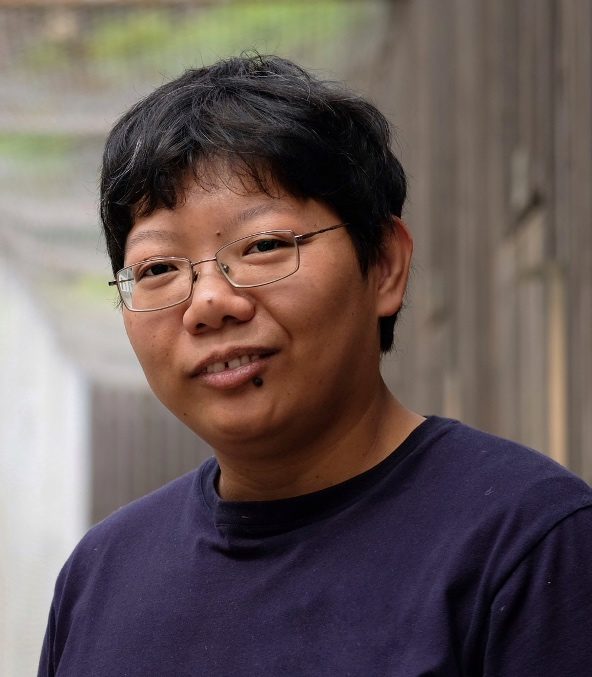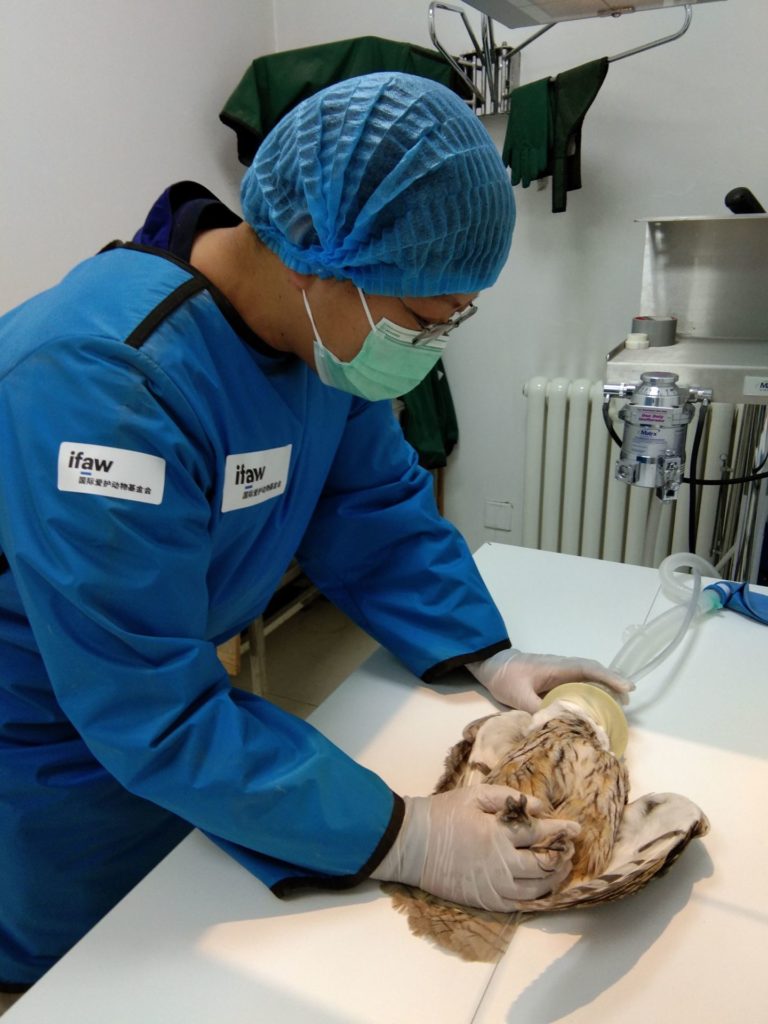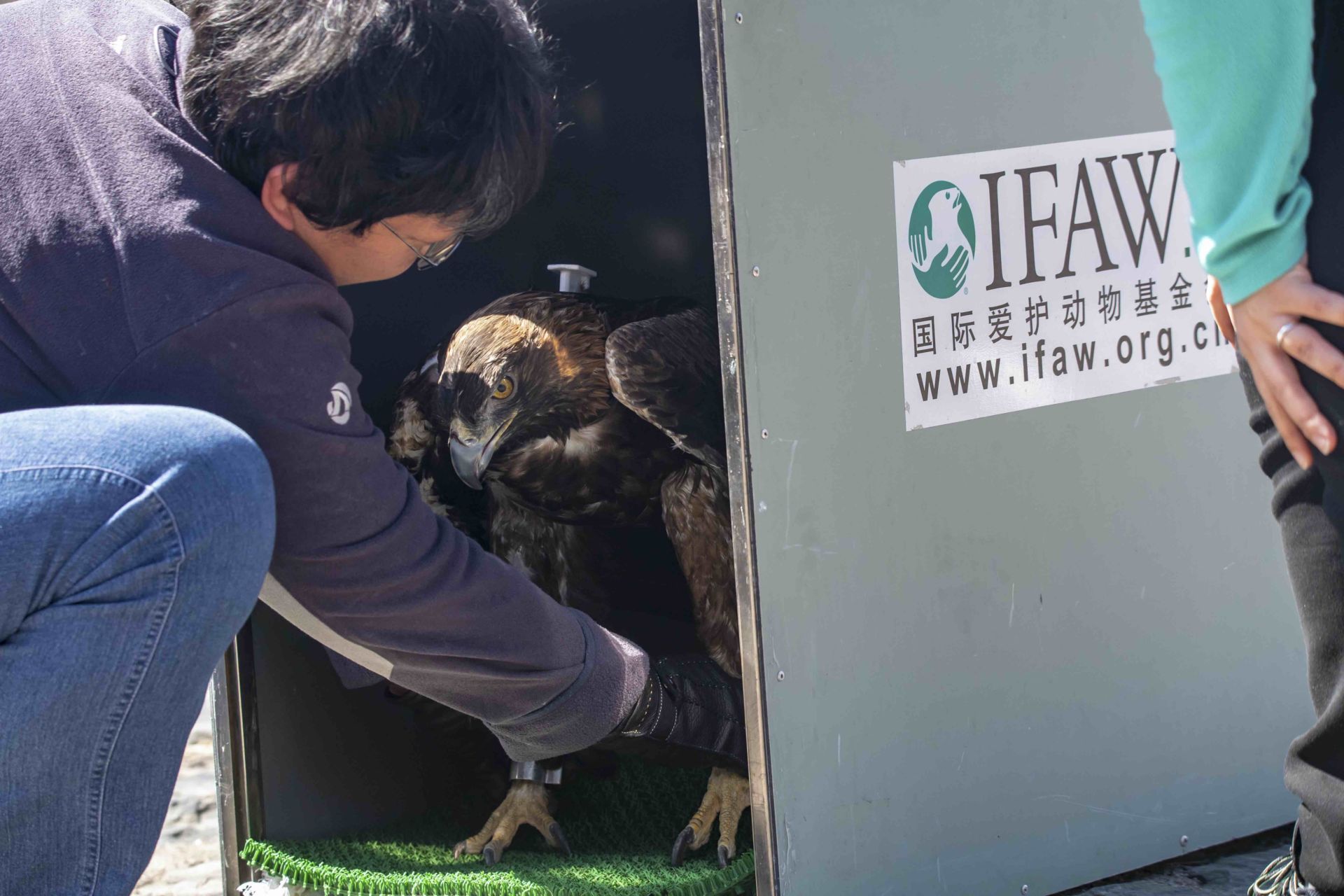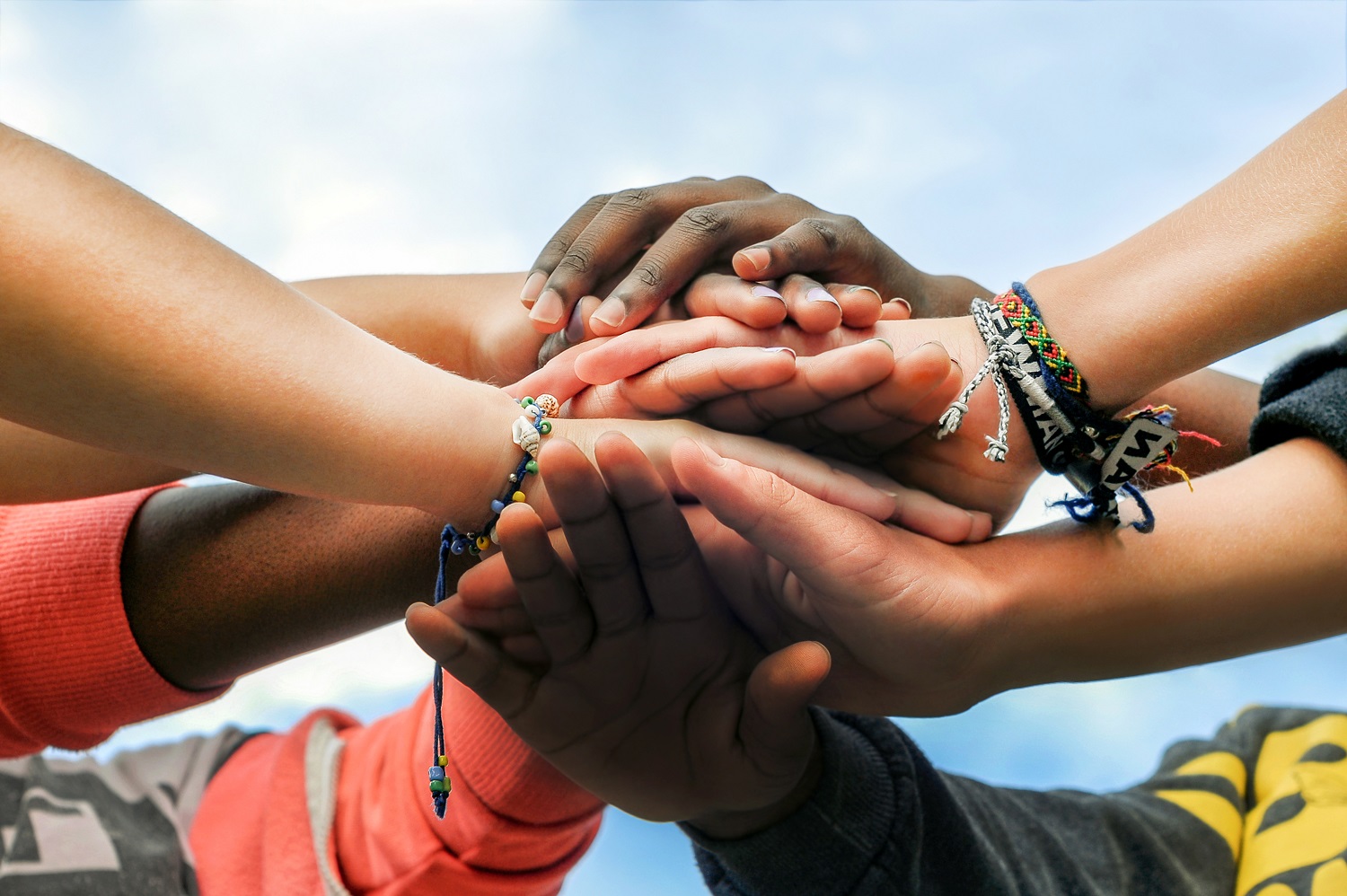For 39-year-old Beijing resident Lei Zhou, her work rescuing, treating and releasing many of the birds of prey injured as they navigate the bustling Chinese capital on their migratory route is far more than just a job; it is her life’s mission and a great source of personal pride.
Lei, who has felt a profound love for all animals since childhood, studied entomology at college before a chance conversation with a friend after graduation led her to attend a publicity event for the International Fund for Animal Welfare’s (IFAW) Beijing Raptor Rescue Center (BRRC), where she signed up as a volunteer back in 2009, before being recruited to return as a raptor rehabilitator in 2012.
Speaking of her feelings as she began her full-time career, Lei said: “With my previous volunteer experience, all the work seemed familiar, yet new and fresh. I also remember I was so nervous the first time I drove to pick up a sick bird by myself, that I called my dad who is a bus driver to go with me!”

Birds of prey are protected by law in China but often fall victim to environmental degradation and wildlife trade. They can also end up with serious injuries such as bone fractures, broken wings or bullets lodged in their bodies. As Beijing is part of the major migratory route for raptors, IFAW felt a centre was needed to rescue, rehabilitate and release these wounded birds back into the wild and in 2001 partnered with Beijing Normal University (BNU) to open the BRRC.
Lei works as part of a four-woman team of raptor rehabilitators and treats each injured bird with the utmost care to ensure it has the best chance of survival, as well as working to educate the local community about birds of prey, their welfare and conservation needs.
She describes BRRC as a peaceful place in the busy heart of the city and said: “I love every part of my job. When I see raptors become healthy and strong, as they recover from weakness, illness and injuries, the overwhelming pride and sense of achievement cannot be expressed by words. The only thing I can do is carry on and do more.”
Related Articles: Baboon Sanctuary: Women in Conservation and Gender Equality in Belize | Biodiversity Talks: Kickstarting a Paris-Style Nature Agreement?
One of the most memorable and special rescues to date for Lei was that of a Golden Eagle, found lying in the road and bleeding from its beak. Lei was heavily involved in the eagle’s rescue, treatment and 228-day rehabilitation treatment before being able to release it back into the wild from a clifftop in March 2019, fitted with a GPS transmitter to monitor its progress.
Lei said: “I still remember the thrilling feeling the first time I held a Golden Eagle. I felt the power looking into its golden feathers and deep eyes.”
For Lei and the rest of the team, in addition to the day-to-day challenges that come with the job of saving injured birds of prey, the outbreak of COVID-19 brought a slew of additional challenges that were impossible to foresee. Being located on the campus of BNU, the rescue work was affected when the university upgraded its security to ensure the safety of students and staff during the pandemic.
Other regulations became more strict and the small team needed to change its working patterns accordingly, to continue care for the birds while minimising the risk of cross-infection for staff.

With many additional logistical challenges imposed by the COVID restrictions, Lei said: “We four female rehabilitators became ‘superwomen’ and took all the extra jobs; pulling carts for transporting raptor foods and other consumable materials, replacing and adjusting the steel oxygen bottles with various tools, such as wrench and pliers, climbing a ladder to check outworn nets on the roof of birds’ wards and repair them, making a feeding perch platform with a handsaw.”
This was on top of the routine daily rescue and rehabilitation work, such as food preparation, physical examination of the birds, blood tests, X-rays, physical exercise of the birds, recording their medical and treatment plans, monitoring birds’ condition in the wards and ensuring facilities are kept clean.
Despite the extra hard work, Lei said: “I believe it is worth making these efforts. It comes down to the point that life deserves respect and shall be respected.”
In addition to rescue and education work, BRRC staff share best practice with law enforcement and wildlife rehabilitators around the country. More than 5,500 raptors have been admitted to the BRRC since its founding, with around 54% successfully returned to the wild.
When asked about Lei, one colleague said: “She always says that she used to walk with her head down, looking for bugs. Now she always walks with her eyes in the sky.”
Editor’s Note: The opinions expressed here by Impakter.com columnists or contributors are their own, not those of Impakter.com. — In the Featured Photo: Lei Zhou helps a bird of prey out of an IFAW container. Featured Photo Credit: IFAW.









